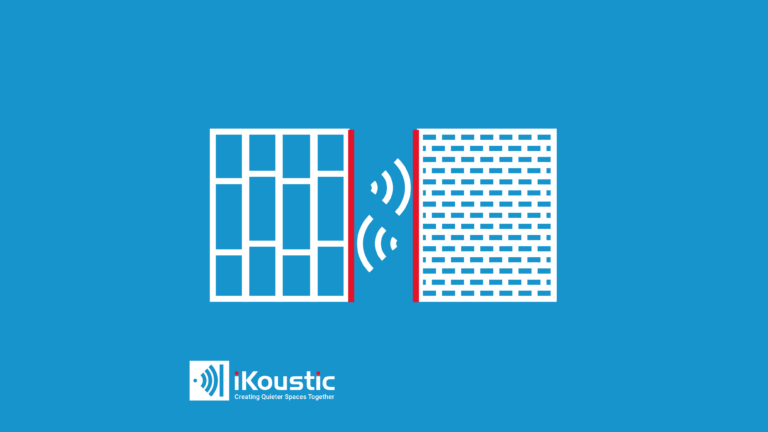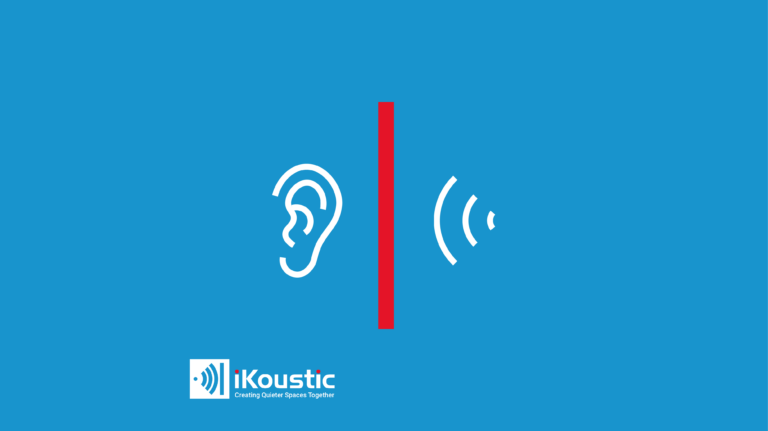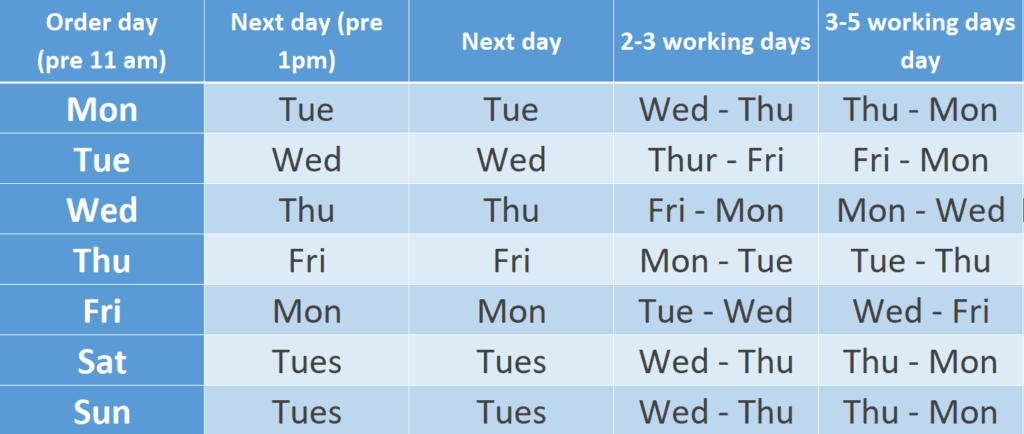15 Soundproof Materials Explained (complete guide to how they work)
Soundproof materials can be confusing, use this guide to understand exactly what they do and how they work. When you understand this, you can make better informed decisions about your soundproof materials and understand if you are receiving good advice.
Quick guide to how soundproofing works
Key Terms, click to jump to their definitions:
Airborne noise
Impact noise
Decoupling
Insulation
Absorption
Airborne noise
Sound that uses the medium of air to travel through. Common example include talking, music and TV.
Impact noise
Sound generated by two materials coming into contact, sound vibrations travel through the materials. Common examples are footsteps and washing machines.
Flanking Transmission
When sound vibrations travel over, under or around a barrier. This could be using holes in walls made by light fixings, shelves or picture hooks. Another common example is pipe work which can vibrate with sound waves and travel between various rooms.
Watch a short video about flanking transmission here.
Decoupling
A method of soundproofing which reduces points of direct contact between two surfaces or places a vibration resistant material between them. Common examples are isolation clips (MuteClips), secondary stud walls and isolation strips on stud work.
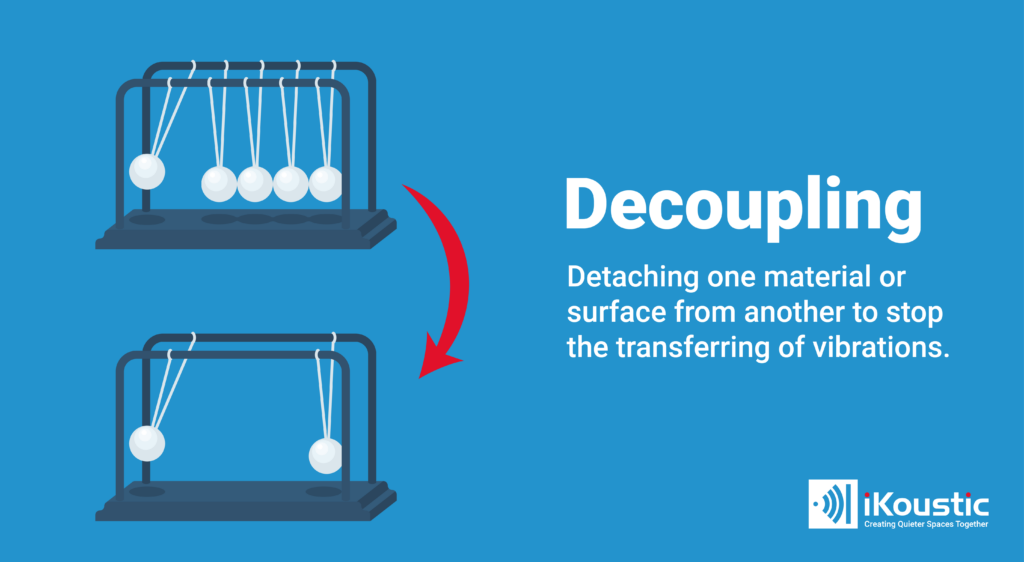
Insulation
A method soundproofing that uses materials of high mass to reflect airborne noise within a space. This prevents sound escaping a space or entering a space.
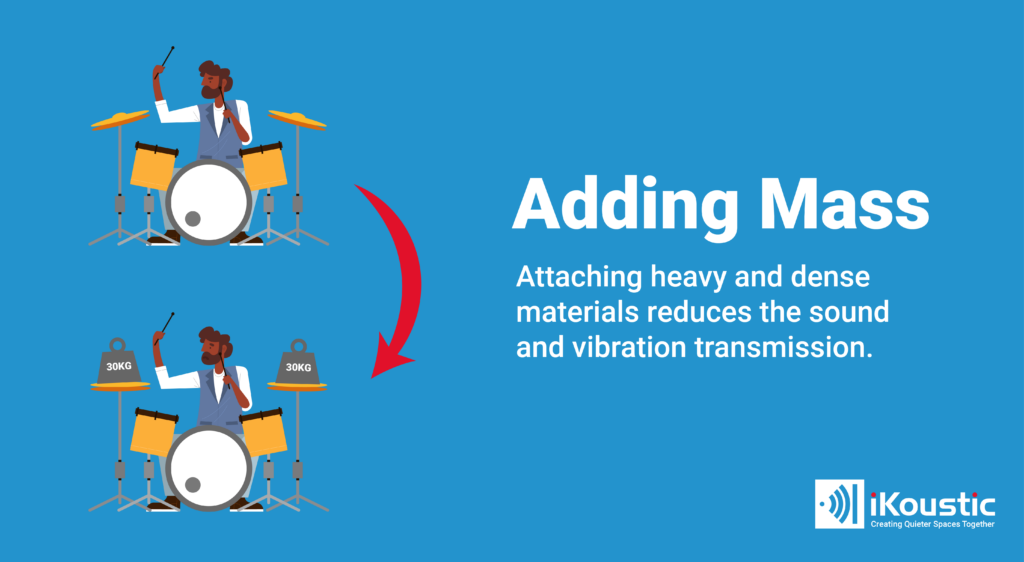
Absorption
A method of sound control which uses materials with open structures, such as foams and loose woven fibres, to damp sound. This reduces the reflection of sound waves within a space which would lead to reverberation and the amplification of sound.
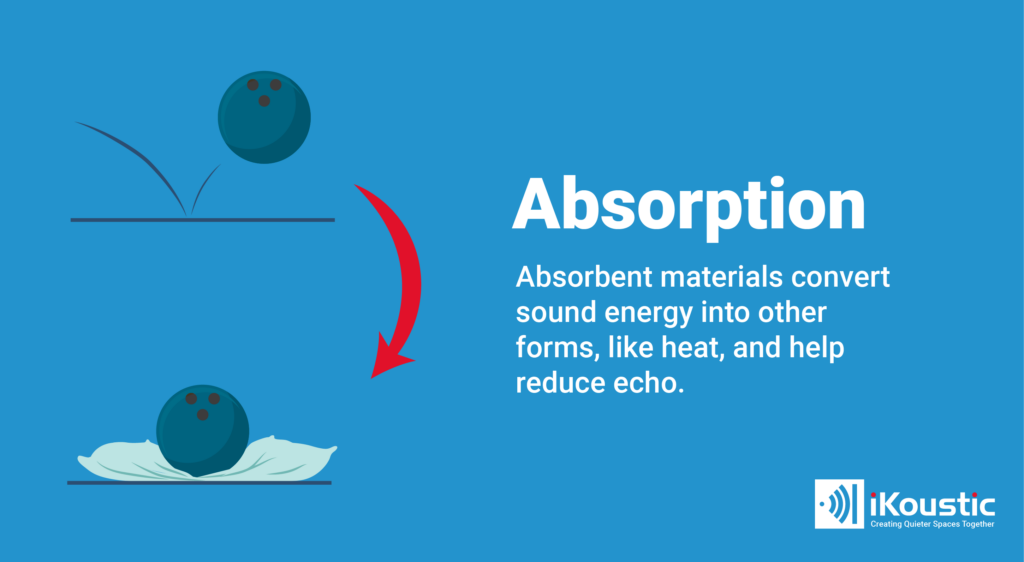
How to reduce impact noise
To reduce impact noise, which uses the structure to travel through, an ideal solution is to decouple surfaces wherever possible. This will reduce the points of contact at which vibrations are able to pass from one structure into the next.
An example of this could be a ‘floating floor’ which would make contact with the ceiling below in fewer places and reduce the volume of footsteps. Alternatively, stud walls can be rested on isolation strips which will reduce the amount of vibrations that can travel from the floor into the walls.
How to reduce airborne noise
Airborne is reduced by using materials of high mass to insulate a space. This works as the sound vibrations in the air don’t carry enough energy pass through the material, as it’s too dense t make vibrate. Instead, they are reflected away, this works to keep sound inside a space and prevent sound entering the space, too.
Materials of high mass can be added to walls, ceilings and floors and are often used to reduce ‘noisy neighbour’ disturbances.
How to reduce flanking transmission
Flanking transmission can be reduced in a multitude of ways but first and foremost the weaknesses need to be identified. These could be fixings for lights, pipe work or screws in walls. Any unavoidable weaknesses, such as pipes, can be treated as individual problems.
For example, there is soundproofing pipe wrap that can be installed to help isolate the system. For light fixings, there are sound control caps that can be fitted and likewise for electric sockets. When screws and nails are fixed to walls, it’s best to avoid drilling them further than necessary.
Soundproof materials for airborne noise
Mass-Loaded Vinyl (MLV)
Mass-loaded vinyl is a popular and effective soundproofing material. It’s versatile, cost effective and easy to source.
What is it for?
Reducing airborne noise
How does it work?
The high mass reflects airborne soundwaves. Using different thicknesses of MLV in one solution will reflect a wider range of frequencies.
Where is it used?
Mass loaded vinyl is a common soundproof material for floors and used in preformed wall panels. MLV can also be used as a DIY solution for doors.
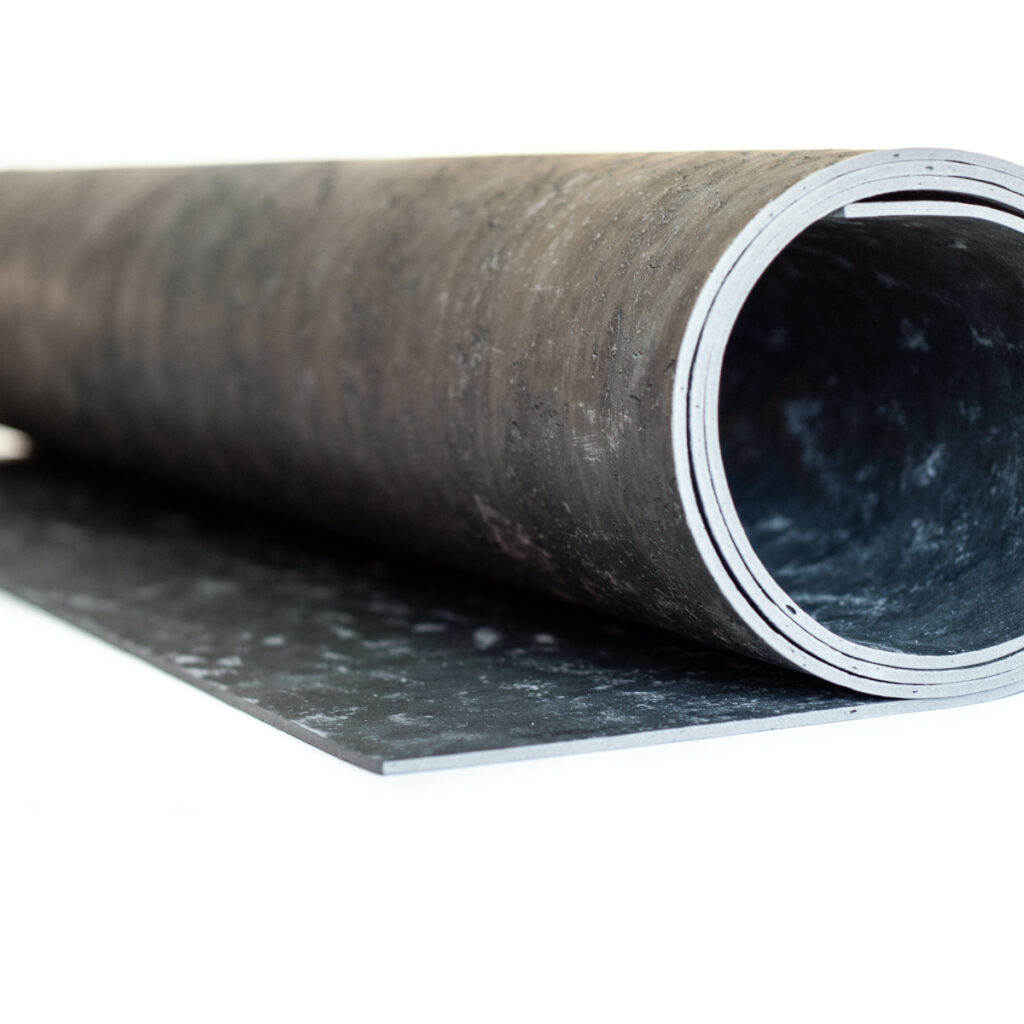
Acoustic Plasterboard
Acoustic plasterboard looks the same as regular sheets, however, it has an increased mass.
What is it for?
Reducing airborne vibrations
How does it work?
The higher mass in acoustic plasterboard allows it to reflect airborne soundwaves and insulate a space.
Where is it used?
Acoustic plasterboard can be used on walls and ceilings. It is often used as the structural base to preformed wall panels.
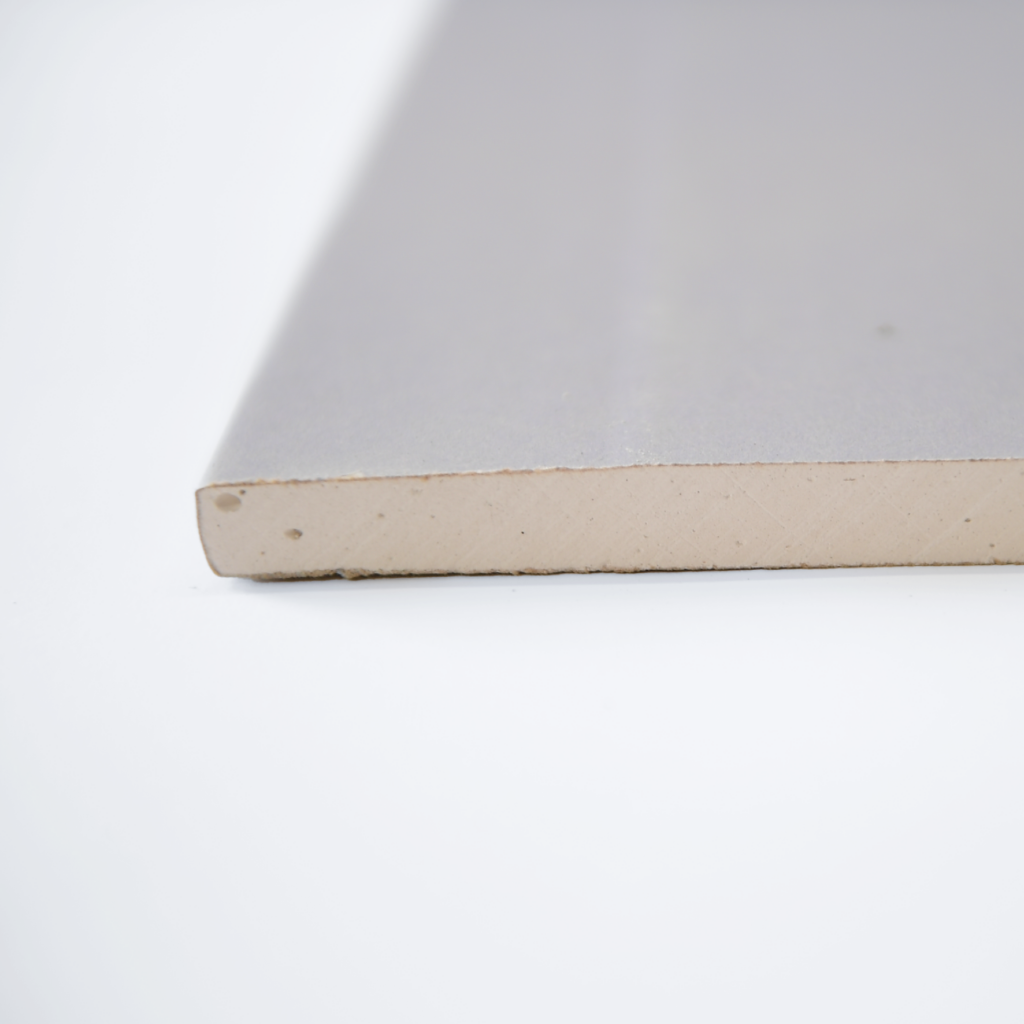
Cement Fibre Board
Cement fibre boards have over double the density of ordinary chipboard flooring which reduces much more airborne noise.
What is it for?
Reducing airborne noise
How does it work?
The increased mass is better for reflecting more airborne soundwaves and creates a stronger acoustic barrier.
Where is it used?
Floors
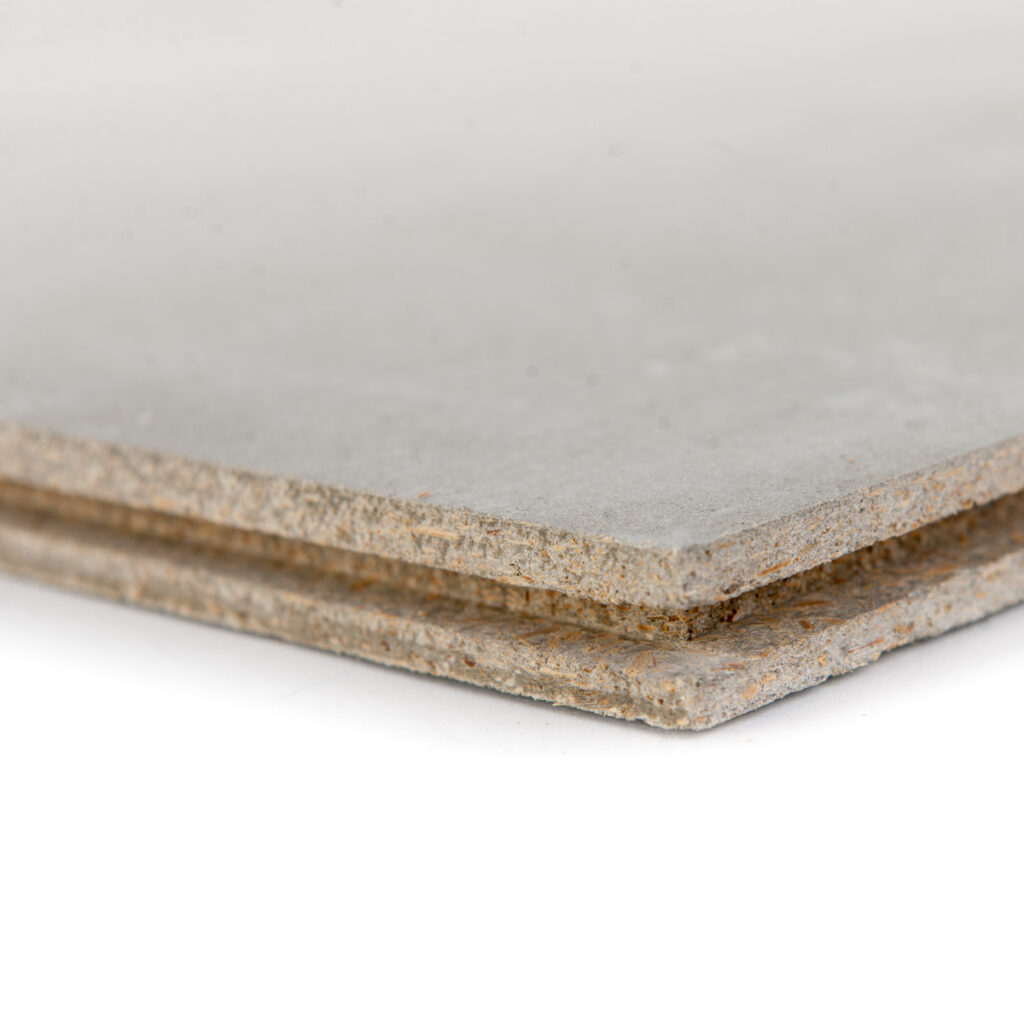
Acoustic Mineral Wool
Mineral wool that has a minimum density of 45kg/m3 is considered acoustic. It is available in different densities and thicknesses and is a fairly rigid material.
What is it for?
Reduce airborne noise
How does it work?
The open structure allows sound vibration to travel through and the micro-friction created between waves and fibres exhausts the sound into other forms of energy, like heat.
Where is it used?
In any open cavities between joist and stud work.
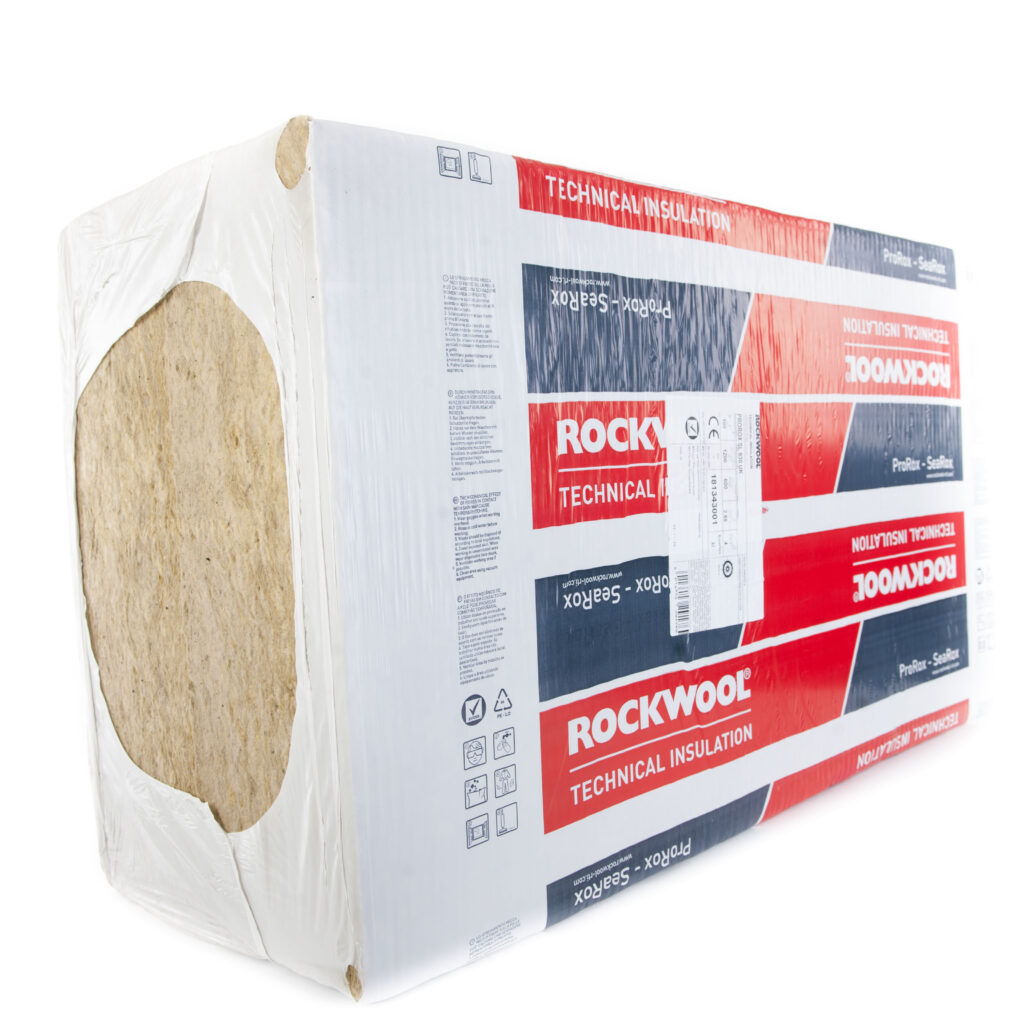
MuteClips
Isolation clips with dual density silicone that support a metal channel, used to support a new wall or ceiling partition.
What is it for?
Airborne noise
How does it work?
Dual density, vibration damping silicone, wraps the screw butt to prevent direct contact between the wall and the metal supporting channel. This isolates vibrations and is the most effective solution for space used.
Where is it used?
Walls and ceilings
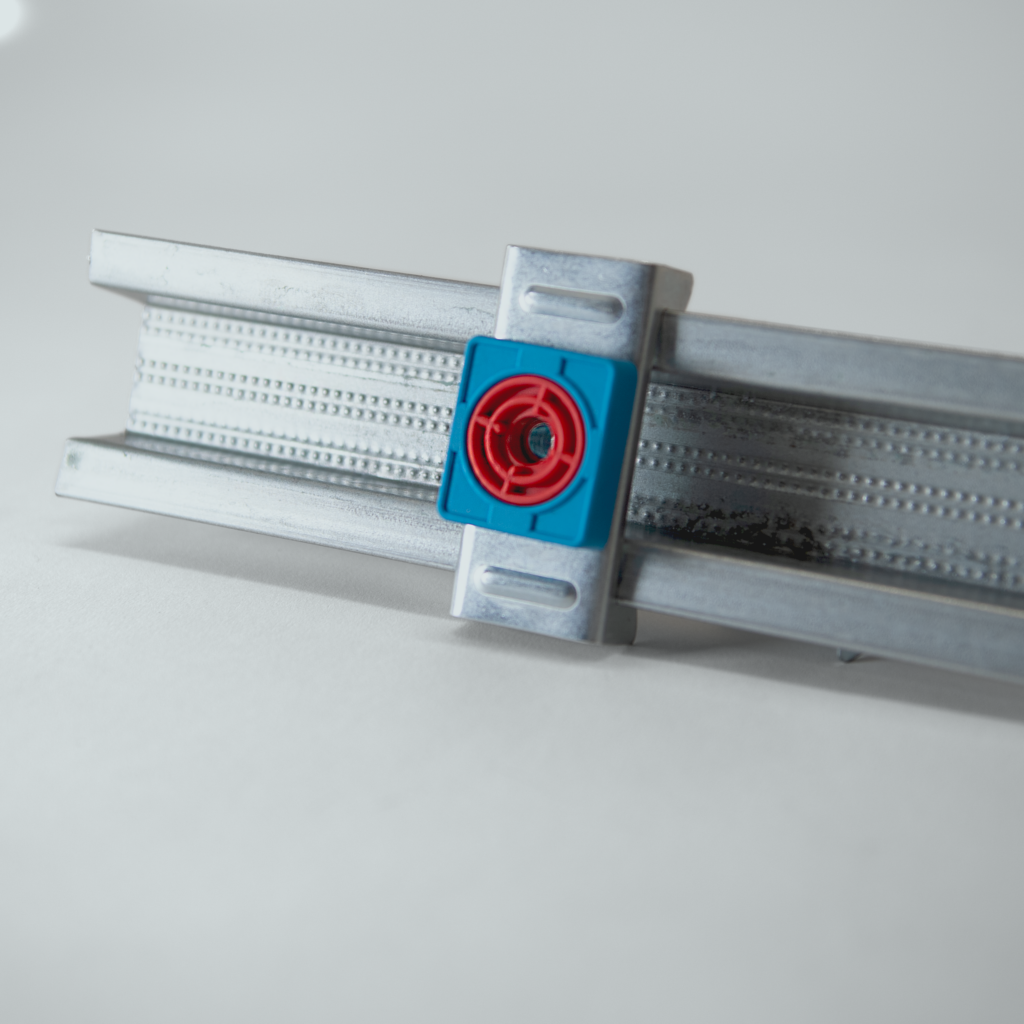
Soundproof materials for impact noise
Rubber Crumb Underlay
Our recycled rubber crumb underlays are made from over 90% recycled rubber tyres. These roles are effective and easy to install.
What is it for?
Reducing impact vibrations
How does it work?
Recycled rubber crumb underlays are able to compress and decompress with impact. This spreads the vibration energy and reduces transmission to other surfaces.
Where is it used?
Rubber crumb can be used as an underlay, often for concrete floors and as concrete underscreeds.
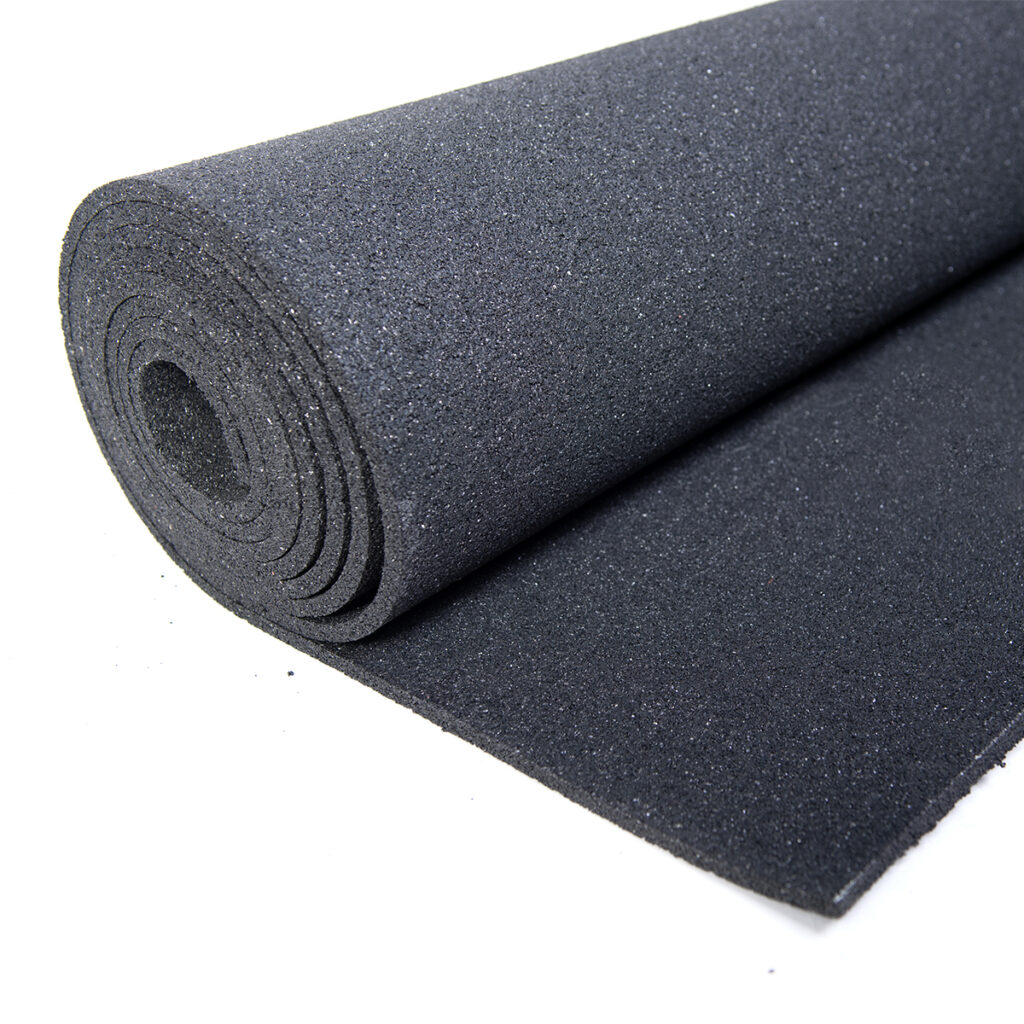
Closed-Cell Foam
The closed cell structure helps to isolate and reduce the transmission of sound vibrations from one surface to another.
What is it for?
Reducing impact vibrations
How does it work?
The closed-cell structure is able to compress and decompress which dissipates the impact energy.
Where is it used?
Closed-cell foam is excellent for floors where impact needs to be absorbed, we also use it in some preformed wall panels to mitigate vibrations between materials.
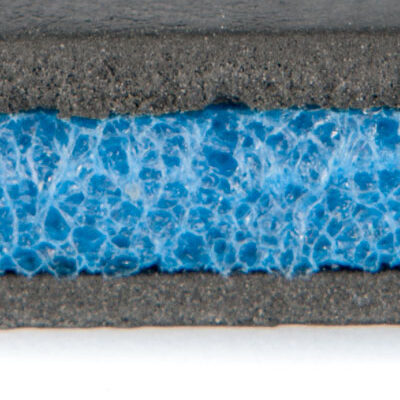
Tecsound
Tecsound is a visco-elastic membrane which comes indifferent weights and with the option for a self-adhesive back.
What is it for?
Reducing airborne and impact
How does it work?
Tecsound has a very mass, for reflecting airborne sound waves. The visco-elastic quality allows the material to flex and absorb impact vibrations.
Where is it used?
Tecsound is a versatile membrane used on walls, floors and ceilings.
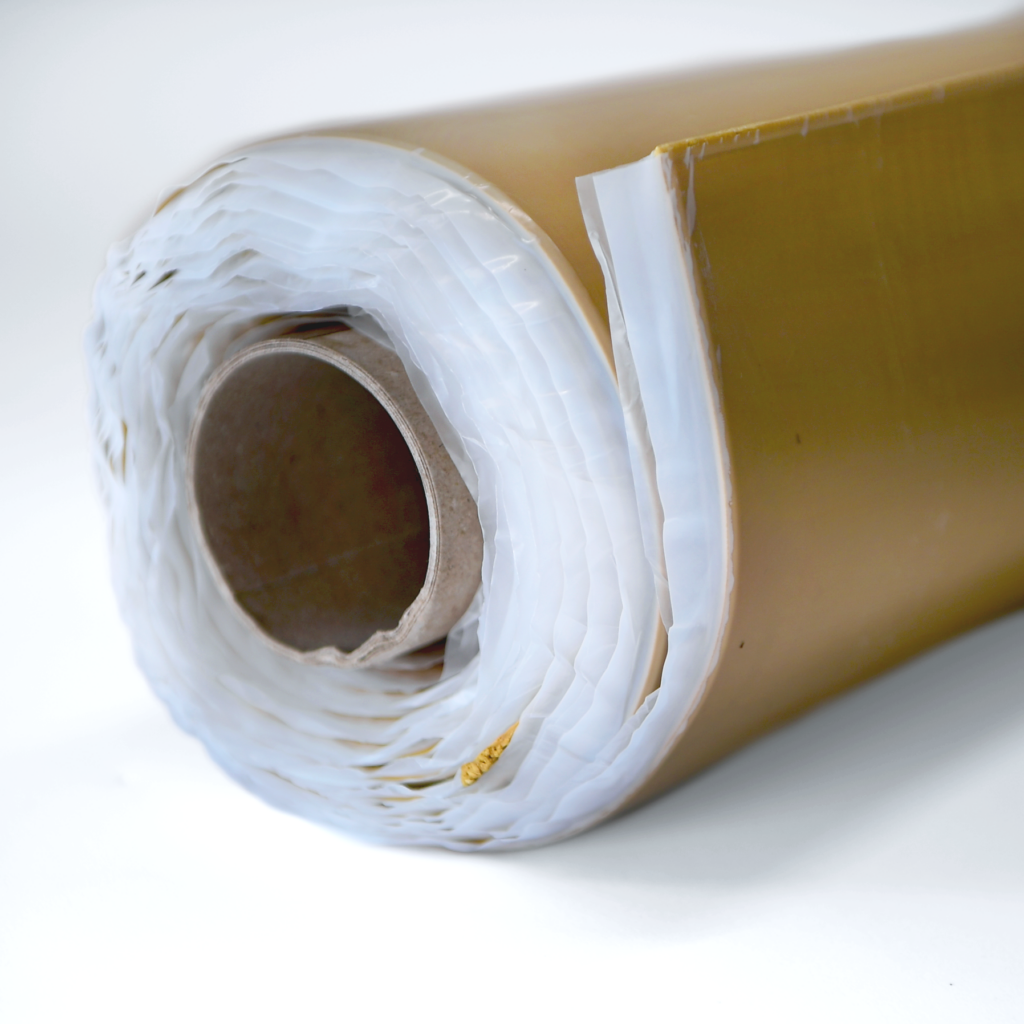
MuteCradle (floating floor)
MuteCradles create a floating floor by resting on a non-resonant rubber. This system is for cement flooring.
What is it for?
Reducing airborne and impact
How does it work?
The cradle reduces points of contact, thereby decoupling structures. New wood joists are raised on ‘cradles’ creating cavities for acoustic mineral wool.
Where is it used?
Floors
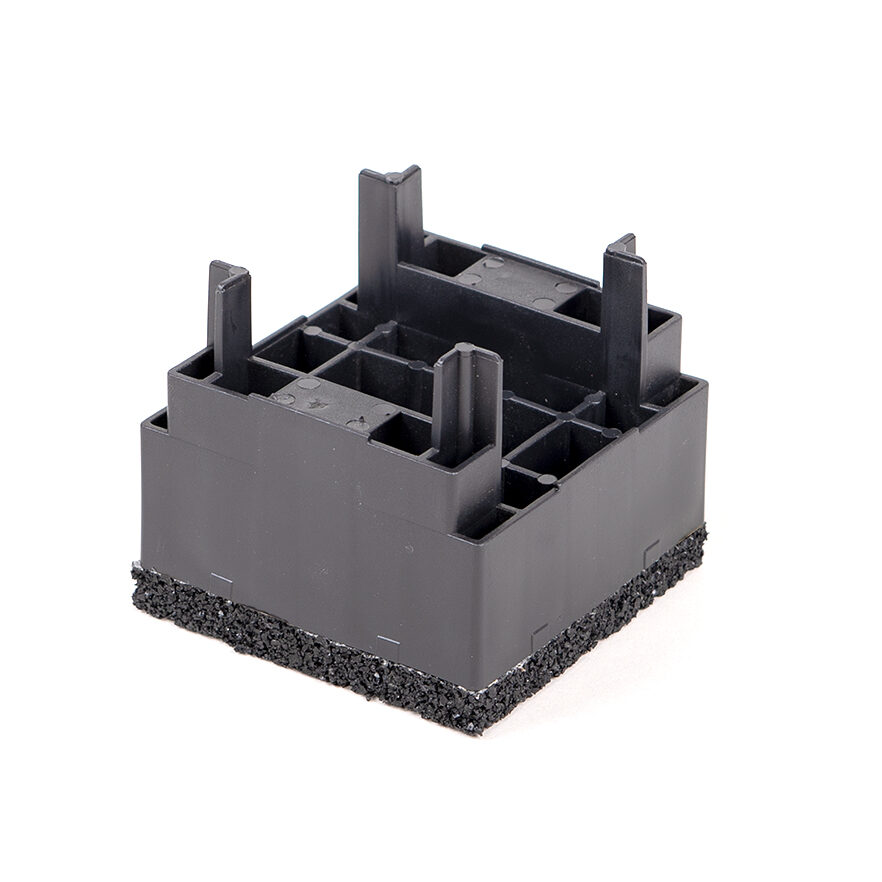
Soundproof materials for flanking transmission
Acoustic Sealant
As a general rule, a 2-5mm gap should be left around the perimeter of installed soundproof panels. Into this gap, acoustic sealant is squeezed.
What is it for?
Flanking transmission
How does it work?
By leaving a gap between material, vibrations cannot pass from one structure to the next. However, an air gap cannot be left either. Acoustic sealant doesn’t set solid and is the perfect, flexible, material to seal the gap.
Where is it used?
Walls and ceilings
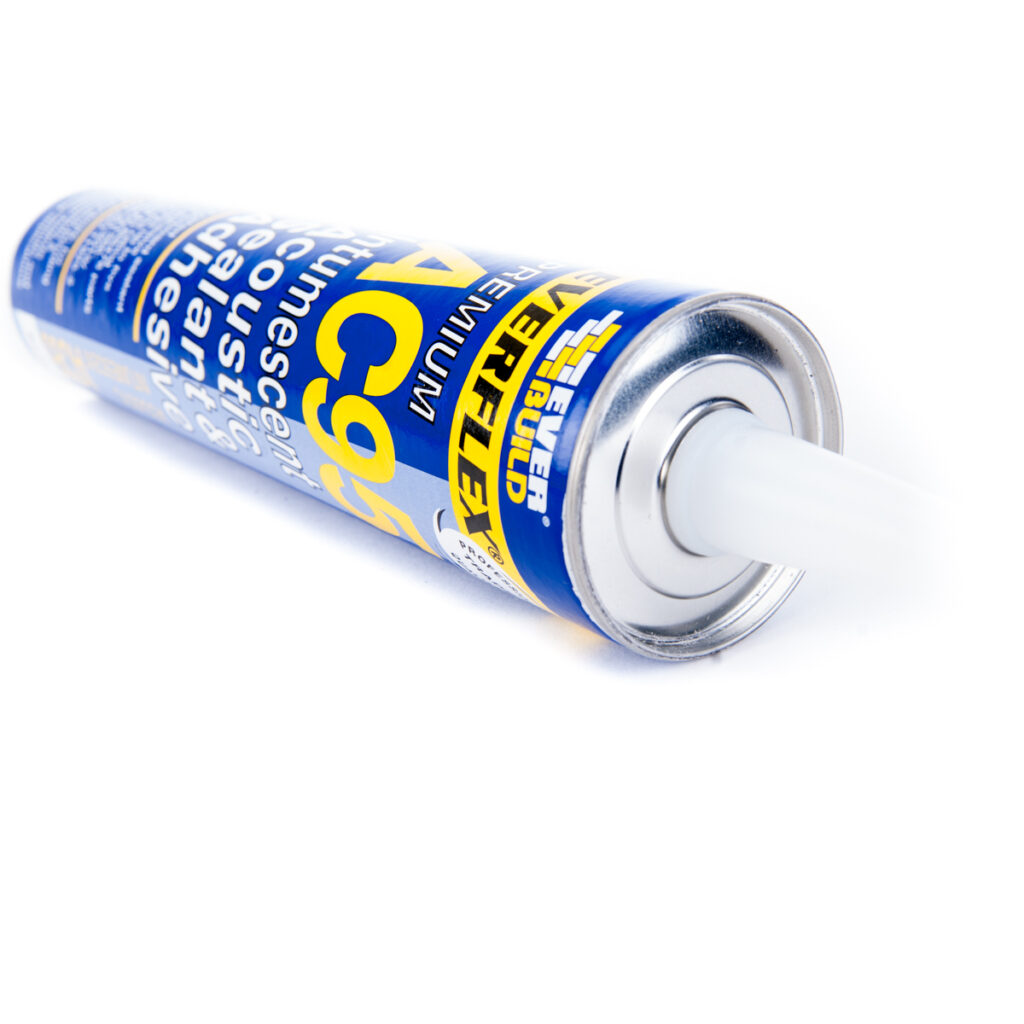
Tecsound FT 55 AL Pipe Wrap
A preformed material with aluminium backed Tecsound and a layer of felt. This is wrapped around a pipe to reduce sound.
What is it for?
Flanking transmission
How does it work?
The layer of felt, in contact with the pipe, dampens sound while the Tecsound membrane reduces the transmission of vibrations into flanking structures or the air.
Where is it used?
Pipes
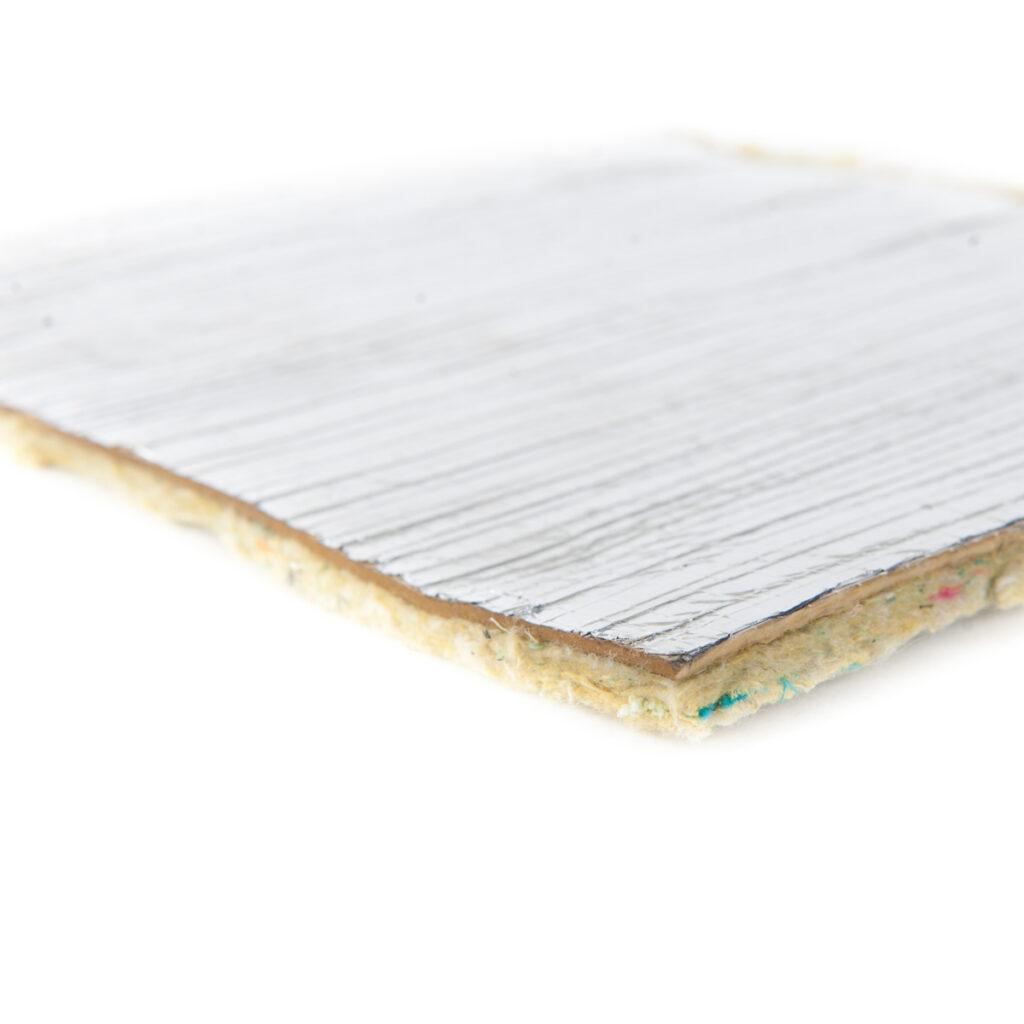
Isolation Strips – Rubber Crumb
Isolation strips can be used on top of wooden joists before the floor is fitted and on stud work to act as a barrier between the wall.
What is it for?
Reducing flanking transmission
How does it work?
Made of the same rubber crumb as underlays, this non-resonant rubber reduces the transference of vibrations between flanking structures.
Where is it used?
Tops of floor joists and outside or stud work.
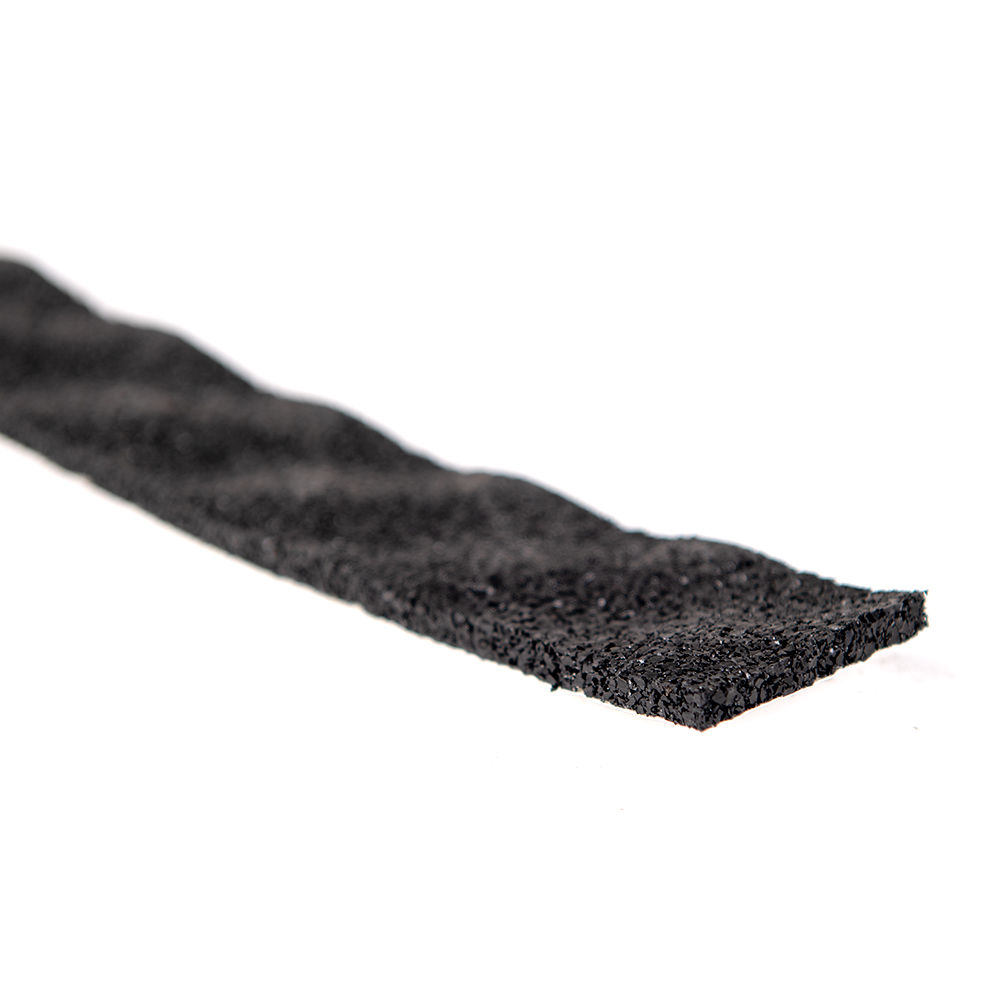
Perimeter Flanking Band
Perimeter flanking band is a foam material used to isolate vibrations and reduce the transference from floor to walls.
What is it for?
Reducing flanking transmission
How does it work?
It lines the perimeter of a floor to prevent direct contact with the wall. The band helps absorb and reduce vibration energy from the floor to the connecting wall.
Where is it used?
Around the perimeter of the room.
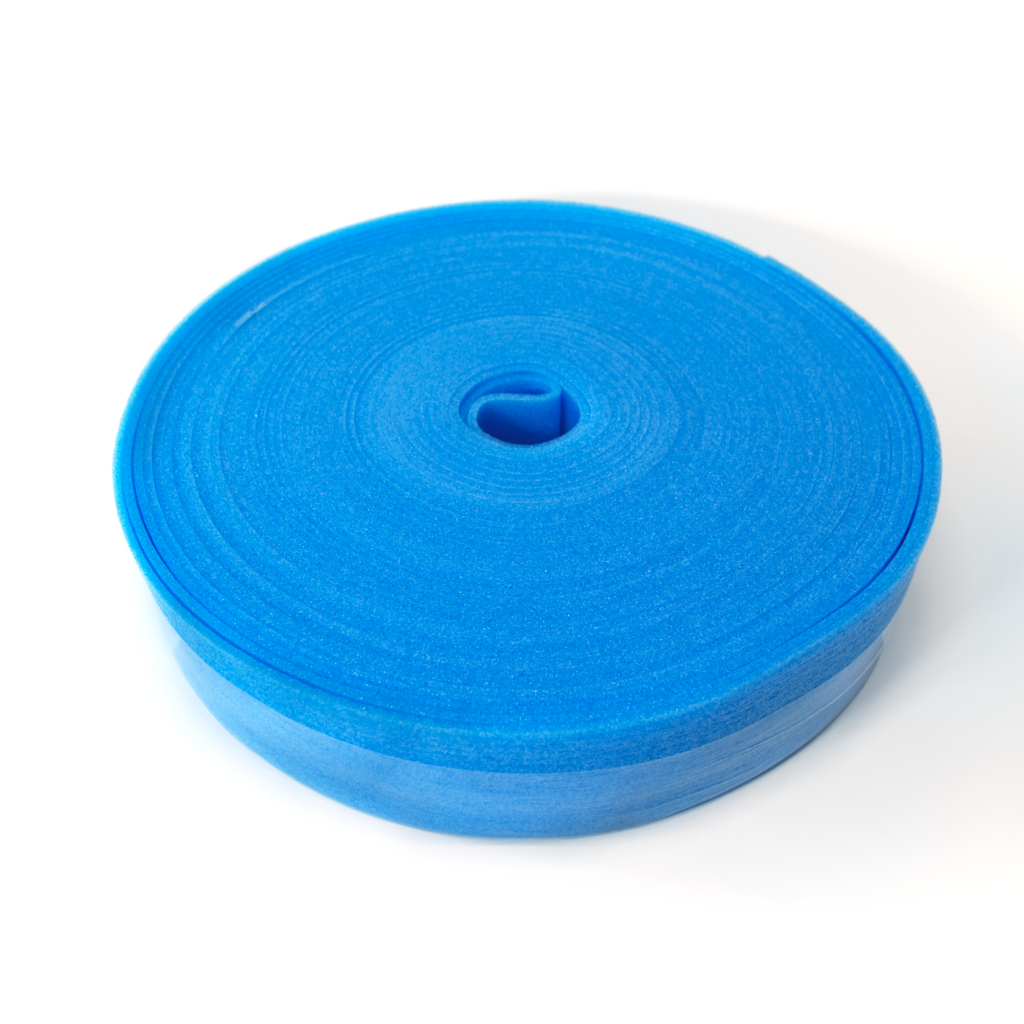
Socket Box Inserts
Sockets are a weak point for sound to easily travel. Inserts will close air gaps and reduce transmission.
What is it for?
Flanking transmission
How does it work?
Instead of allowing for an air gap around the socket, the insert houses the fixings and closes weak areas for sound to easily travel through.
Where is it used?
Walls
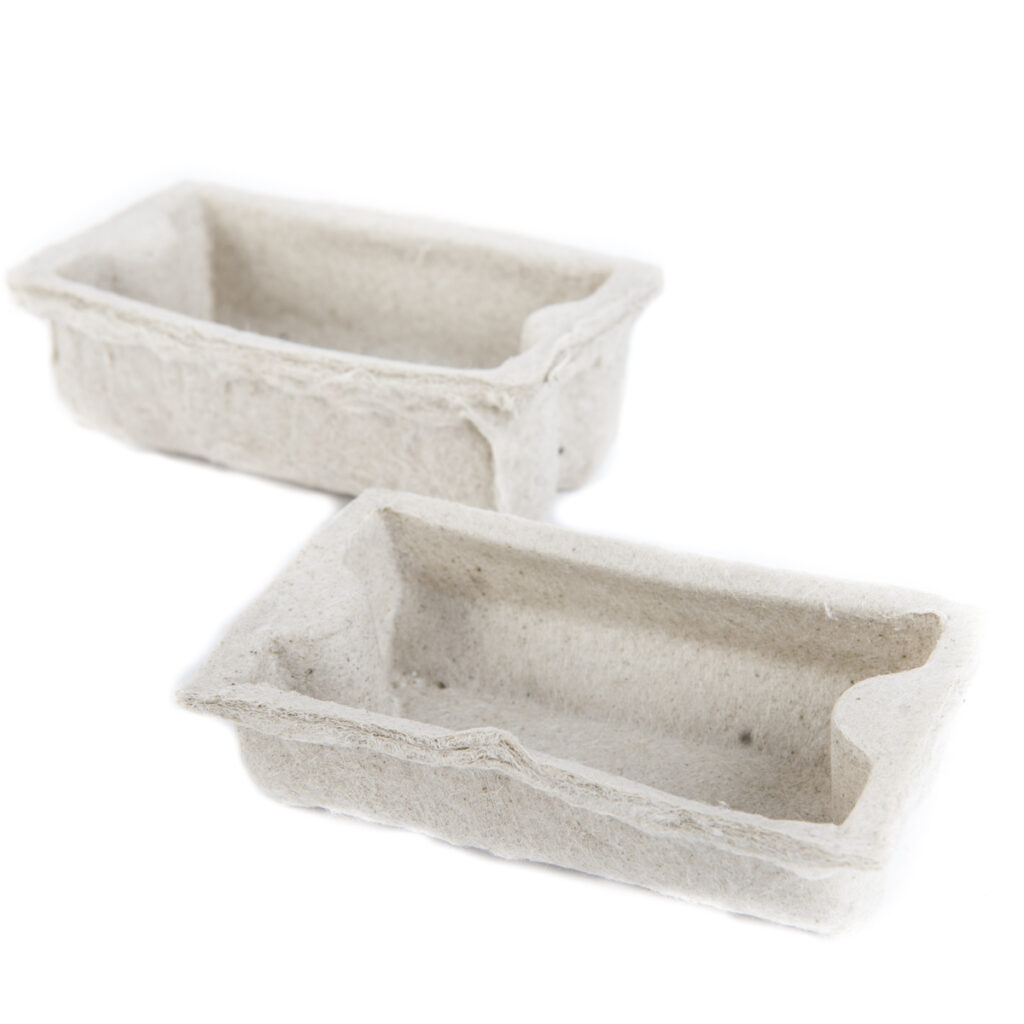
Downlighter Cover
Light fixings provide easy opportunities for sound to travel. Downlighters can be fitted at the time of construction or retrospectively.
What is it for?
Flanking transmission
How does it work?
The downlight cover closes air gaps around the light fixing and helps damp sound. The fixing should be treated with acoustic sealant for an airtight finish.
Where is it used?
Ceilings
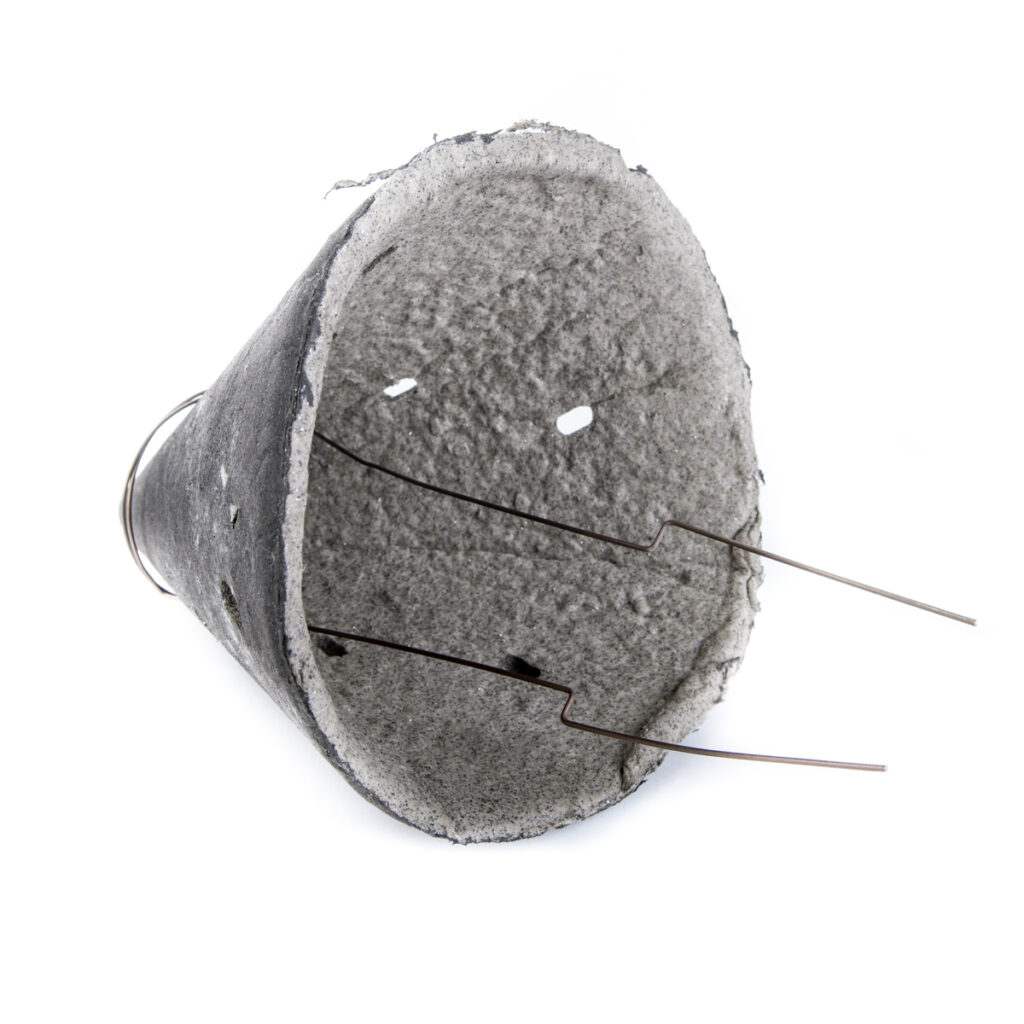
Soundproof materials into soundproof systems
Understanding how soundproof materials work is the best way to make sure you get the right advice and the right solution. Soundproofing is an exacting science and using professional soundproof materials will always deliver you better results than DIY hacks. We use different build-ups of soundproof materials to create systems for floors, walls and ceilings. We have also used the best soundproof materials to create preformed panels and mats that save time, space and money.
MuteBoard Soundproof Panels
MuteBoard 2
A layer of Tecsound bound to acoustic plasterboard to created a soundproof panel able to reflect a wider range of frequencies.
What is it for?
Airborne noise
How does it work?
The Tecsound facing side is attached to the wall and the plasterboard faces out. Both reflect different frequencies of sound to create a strong barrier.
Where is it used?
Ceilings and walls
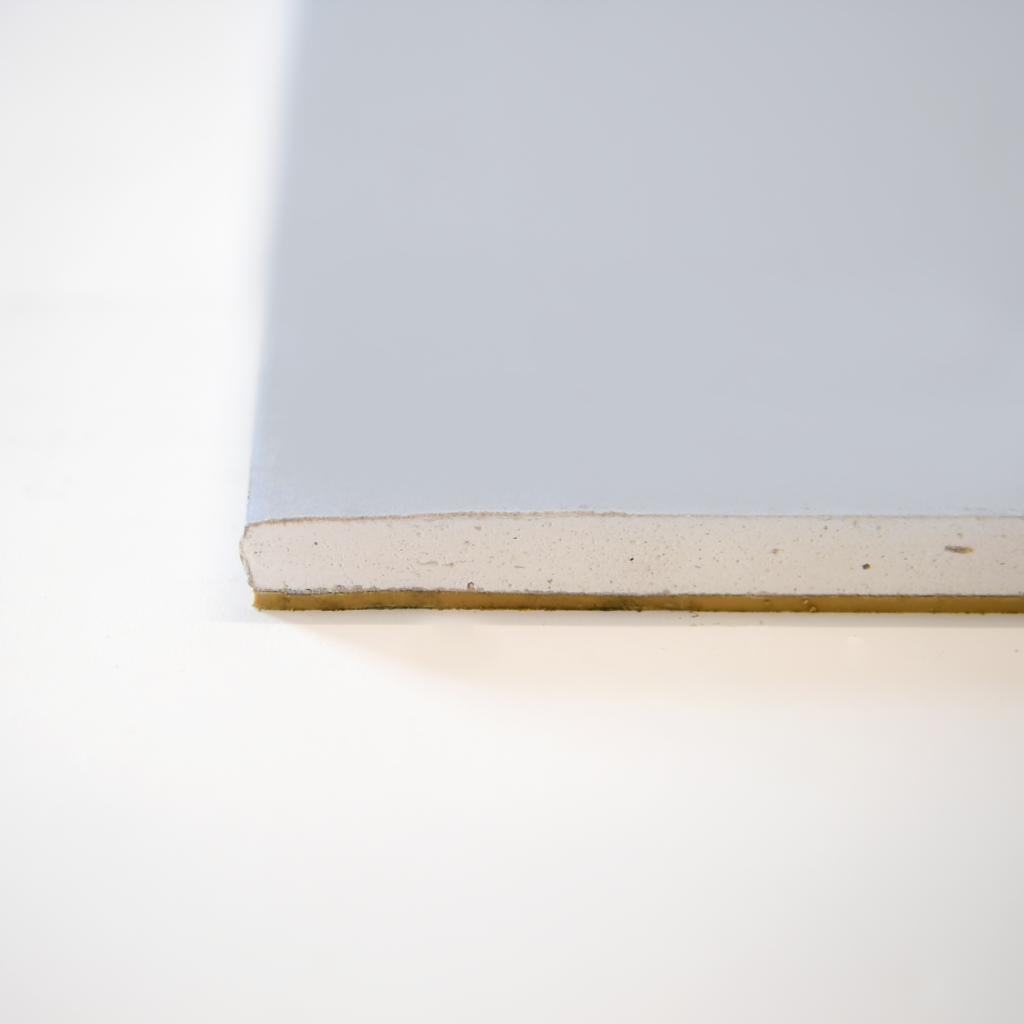
MuteBoard 3
A layer of closed cell foam (wall facing side), mass loaded vinyl and acoustic plasterboard.
What is it for?
Airborne noise
How does it work?
This combines properties of three materials which can control wide range of frequencies. The preformed panel prevents accidental air gaps between layers.
Where is it used?
Ceilings and walls
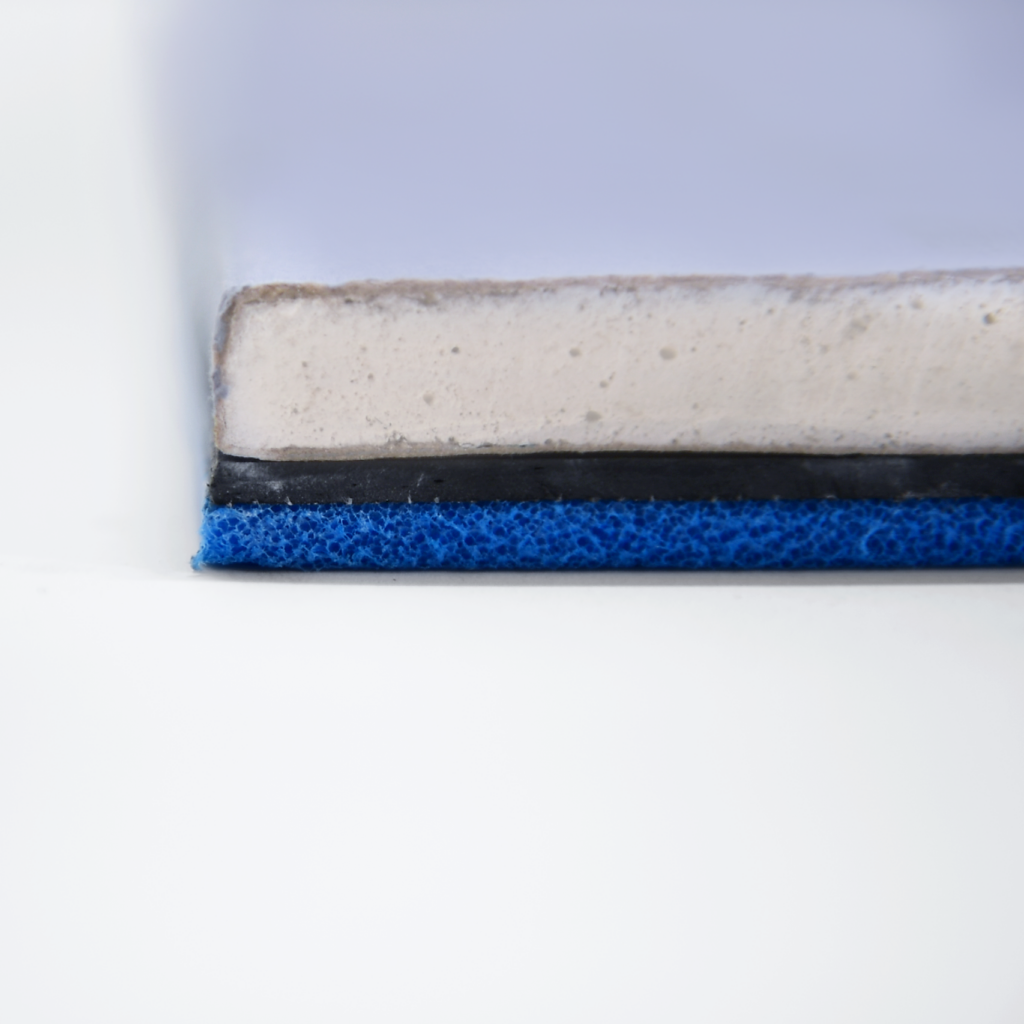
MuteBoard 4
A layer of mass loaded vinyl (wall facing side), a layer of closed cell foam, another layer of MLV (at a different mass) and acoustic plasterboard.
What is it for?
Airborne noise
How does it work?
This soundproof panel creates a resilient acoustic barrier to airborne noise by using three materials with different levels of high mass and a layer of closed cell foam to add flex into the system.
Where is it used?
Ceilings and walls
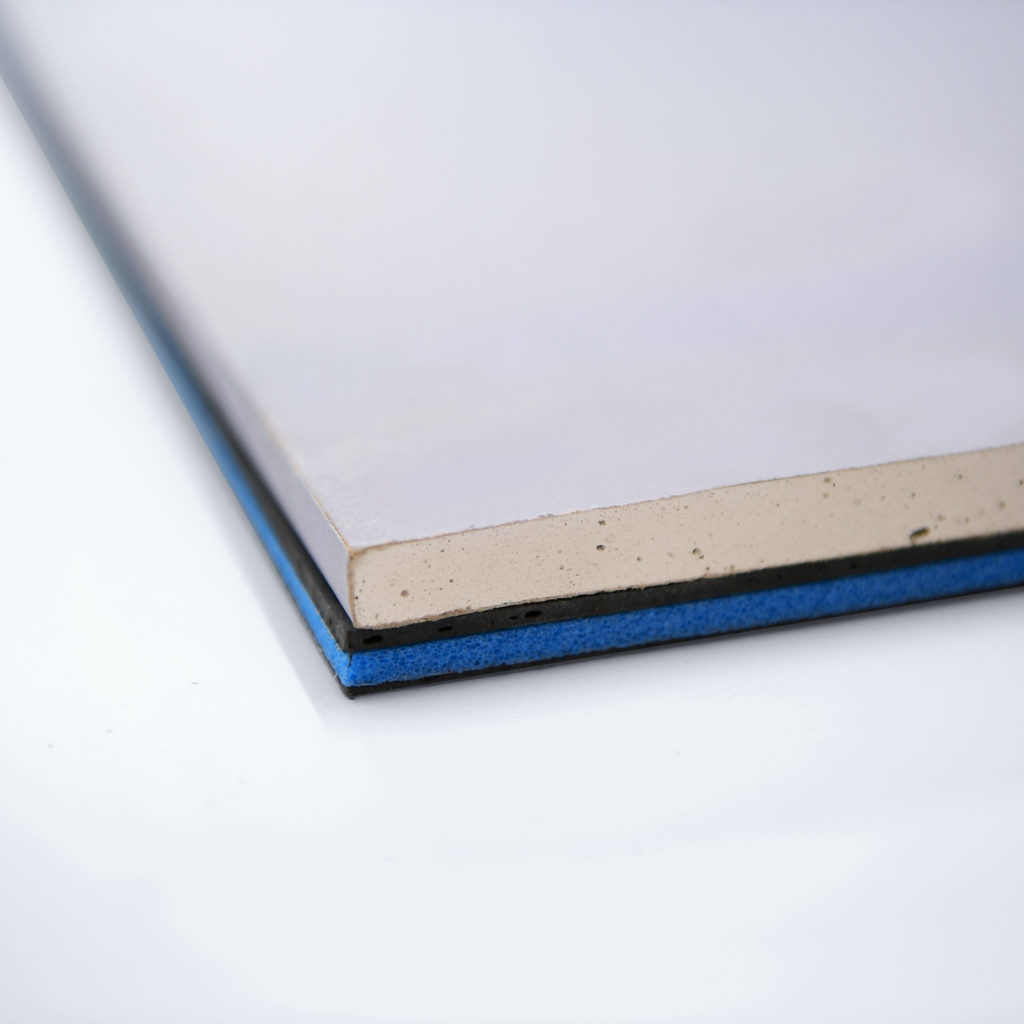
MuteMat Soundproof Underlay
MuteMat 2
A layer of mass loaded vinyl (face up) with a layer of closed-cell foam.
What is it for?
Impact and airborne noise
How does it work?
The MLV reflect airborne noise in and out of the space while the closed-cell foam is able to compress and dissipate vibration energy.
Where is it used?
Floors
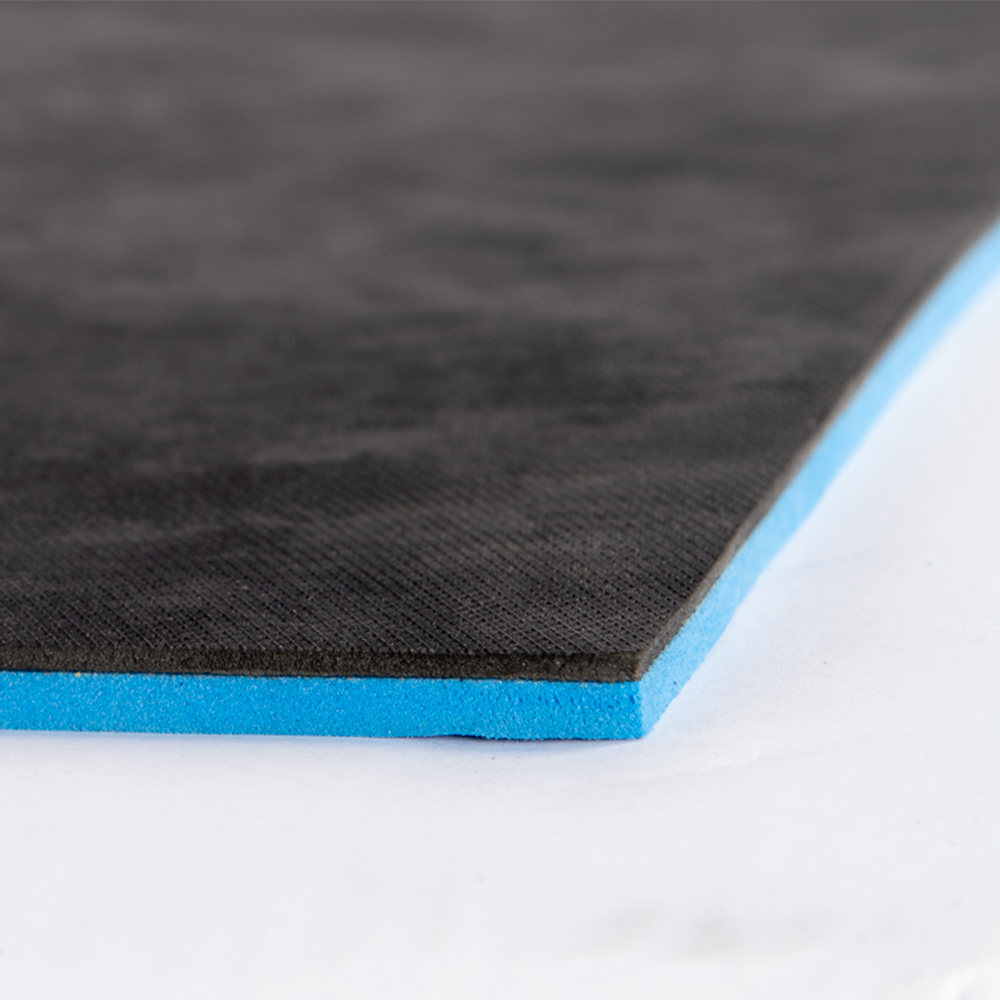
MuteMat 3
A layer of mass loaded vinyl (face up) with a layer of closed-cell foam and more MLV with a different level of mass.
What is it for?
Impact and airborne noise
How does it work?
The MLV reflect airborne noise in and out of the space while the closed-cell foam is able to compress and dissipate vibration energy.
Where is it used?
Floors
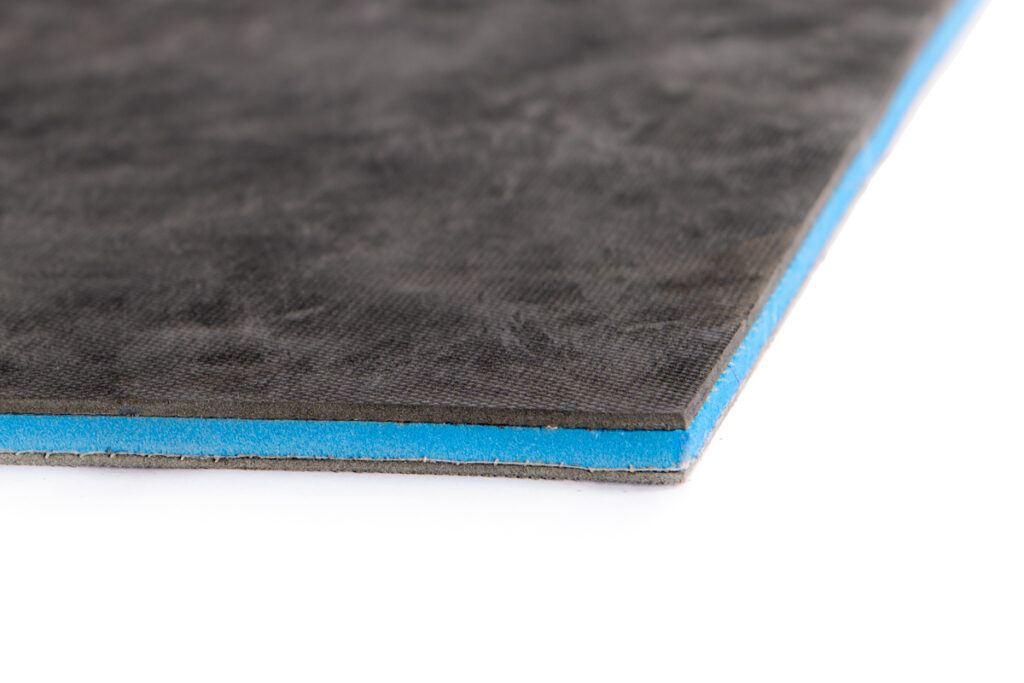
Get expert advice.
Soundproof materials to soundproofing systems
We use a variety of these soundproof materials to create systems. Soundproof systems are a careful composition of different soundproof materials which are able to control a specific noise complaint. For example, if airborne noise is a serious issue, we would advise a system that incorporates different materials of high mass, (to reflect different frequencies of sound), fill cavities to reduce reverberation and also introduce isolation techniques. This could be in the form of isolation strips for stud work, isolation MuteClips, (the best option available), and independent stud walls.
The system example below clearly illustrates how all of these soundproof materials are assembled into one system. These can be created for walls, floors and ceilings.
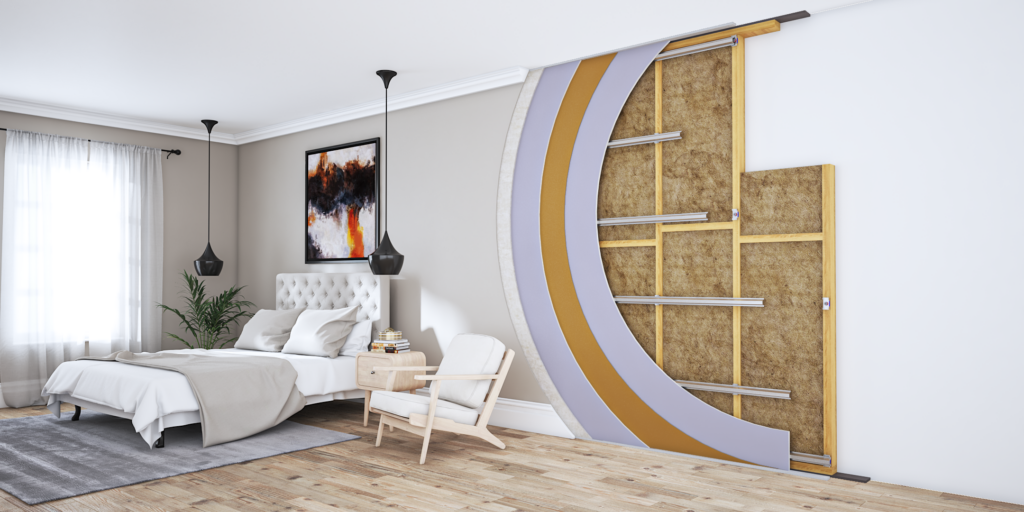
FAQs about soundproof materials
If you’d like more information or advice, please get in touch with us and we will be able to advice you on the best solution for your issue, space and budget.
Which material is best for soundproofing?
For airborne noise, like talking and music, materials of high mass are best (acoustic plasterboard, mass loaded vinyl and acoustic mineral wool). For impact noise, such as footsteps, vibration dampening materials like rubber crumb and Tecsound work best. Decoupling devices will provided the most comprehensive soundproofing solution, however, as this physically separates flanking structures.
How effective is soundproof plasterboard?
Soundproof plasterboard can reduce airborne noise, (talking, music etc), however it is more effective to use advanced soundproof plasterboards which include other materials such as closed-cell foam, Tecsound and mass loaded vinyl.
What makes a material soundproof?
High mass materials can reflect airborne noise, (talking, music etc), which prevents sound escaping or entering a space. Impact vibrations, like footsteps, need to be absorbed. Materials such as rubber crumb are good for this as they can flex and dissipate vibration energy.
What are some soundproof materials?
Airborne soundproofing materials: mass loaded vinyl, acoustic plasterboard, acoustic mineral wool and preformed panels of high mass.
Impact noise soundproof materials: rubber crumb underlay and Tecsound.
How much to soundproof a room?
Our cheapest wall solutions start at £38.78 per m2 but it’s worth considering cost effectiveness and your noise issues. We recommend seeking expert advice before deciding on a soundproof solution.
Where is soundproofing used?
Commonly, soundproof materials are used on walls, floors and ceilings. They can also be used around pipe work, sockets, light fittings, doors and windows. Soundproof materials can be installed directly to the surface or can be used in a stand alone system.





